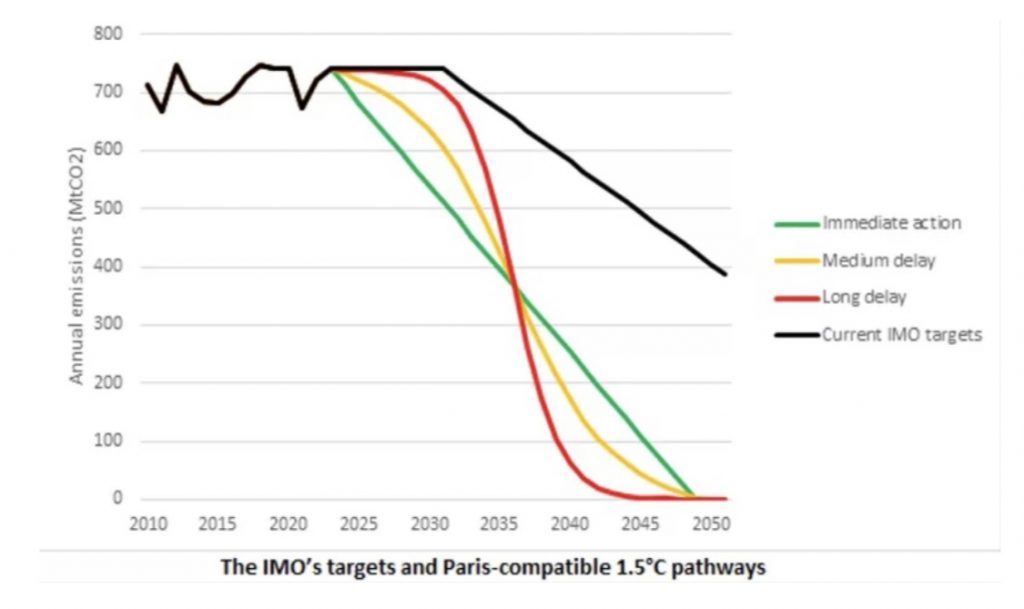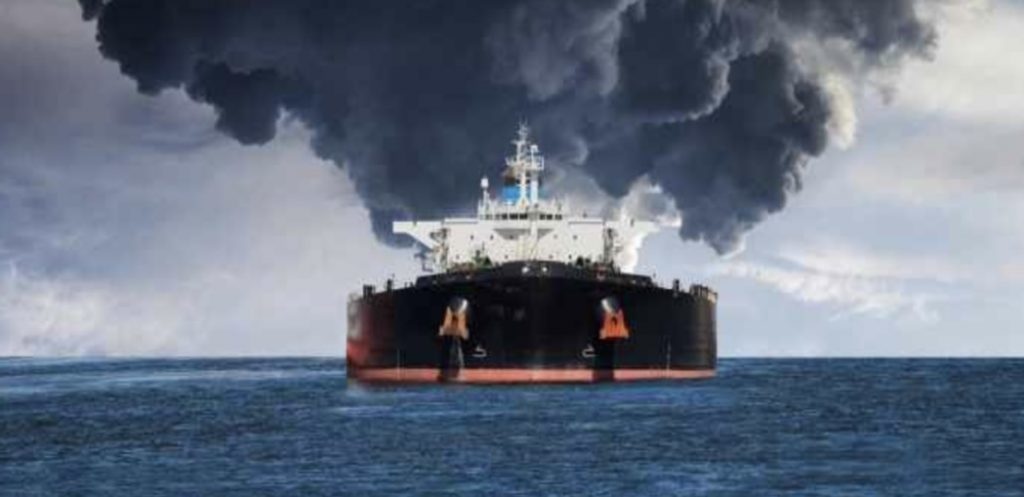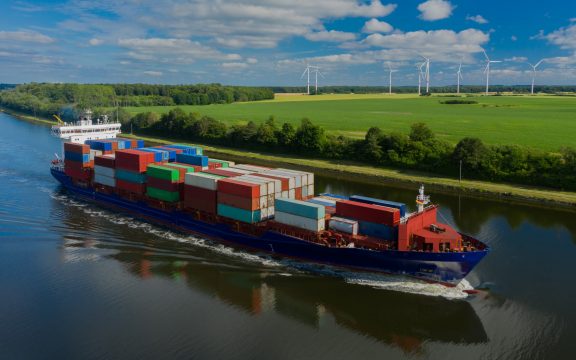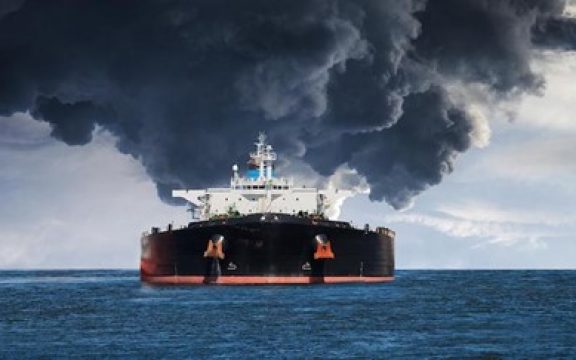Background
In the words of the UN Secretary General, Antonio Guterres, “the world is in a climate crisis and urgent efforts are required to prevent the harsh impact of climate change on humanity”. Since the 2015 Paris Agreement, decarbonization has become a growing agenda item for countries, regions, and businesses around the world. Countries are now on a path to decoupling GDP from greenhouse gas emissions (GHGs) and making significant gains in the process.
Many question whether these actions are taking place at the rate needed for limiting global warming to a safe limit. At present, energy use is the main source of CO2 (carbon dioxide) emissions, contributing 83% of emissions globally (McKinsey). Over 34 billion metric tons of CO2 emissions are emitted every year into the atmosphere. To date, 197 of the world’s nations have signed the 2015 Paris Agreement to limit atmospheric warming to less than 2°C compared to the pre-industrial average by the year 2100. In 2018, the UN Intergovernmental Panel on Climate Change (IPCC) revised the target to 1.5°C, warning that a 2°C scenario would not ensure our safety.

Limiting temperature rise to 1.5°C requires total global emissions reduction of 45% by 2030 and 100% by 2050. This requires an annual cut around the globe of 7.6%. The UN Environment Programme (UNEP) Emissions Gap Report of 2021 shows that current emissions pledges and policies, if achieved would only limit our total warming to 2.7°C by the end of the century. Only 45% of FTSE (Financial Times Stock Exchange) companies, which are listed for their Environmental Social and Government (ESG) performance, have pledged to achieve net zero by 2050. The majority of these (84%) don’t have a clear strategy in place to achieve their target.
While shifting economic infrastructure and technology away from fossil fuels will not be easy, it is not impossible. Building the collective social and political momentum to change our systems has proved more challenging.
Reaching deep decarbonization requires full participation and collaboration among businesses, consumers, and political leaders. The first step any entity can take is to identify the main sources of CO2 emissions for their activities.
Taking steps to decarbonize requires a coordinated technological and social shift from technology that burns fossil fuels. Each sector needs to undergo decarbonization to support the other sectors, as these systems are highly interdependent. The risks of current warming scenarios threaten millions of lives, billions of homes, and trillions of dollars in global economic value. It’s simply not ethical, logical, or safe to assume we can continue burning fossil fuels without rapid decarbonization. Let’s take a closer look at these figures:
- An estimated $54 trillion in costs are associated with current warming projections for the existing pledges countries have made according to the consulting firm, Moody’s. Failure to meet those pledges would increase these costs to $69 trillion.
- Nearly half the world’s population (40%) is vulnerable to the risks of climate change, according to the 2022 IPCC report on Adaptation. This means billions of people will likely experience 5 times more floods, storms, drought, and heatwaves without rapid decarbonization.
These impacts are already harming people around the world, especially in poorer regions. In the past decade, from 2010 to 2020, 15 times more people in Africa, South Asia, and Central and South America died from floods, droughts, and storms than in other parts of the world. In the coming decades, the death toll of these impacts will be hard to ignore. The World Health Organization (WHO) estimates 250,000 excess deaths per year from 2030 to 2050, unless we decarbonize the economy. These deaths come from impacts such as malnutrition, and heat stress.

Climate Change and Shipping
As sea levels rise, climate change impacts the overall productivity of shipping industries worldwide. Rising seas are a problem on their own. Coupled with storm surges and flooding on land and extreme sea cyclones, these become detrimental to the safety and productivity of shipping workers everywhere.
For starters, a good chunk of the shipping business relies on the round-the-clock movement of freight and materials. Gales and tidal waves put ship workers in harm’s way. Almost zero activity happens during a storm for shipping industries, hence a drop in productivity.
Freight and infrastructures inundated by storm surges can drastically cut down operations of many port facilities. Even after the storms die down, flooding can continually disable port operations for a while. Laborers would be prevented from working, which creates a more drastic downtime.
To round it all up, there would also be additional costs in repairs, restorations, and, in some cases, relocation. Rather than doing work that moves cargo to its routes, management will spend precious time on rehabilitation and recovery.
The shipping industry handles more than two-thirds of the world’s trade value. Climate change is slowly but surely hampering how we operate on our seas. If we don’t do something about it, we can expect the world economy to come down on its knees one storm at a time.
Ports around the world stand to suffer billions of dollars in losses if greenhouse gas emissions continue to grow, a new UN Climate Change report (2022) finds. Extreme weather, flooding, and rising sea levels would all damage vital seaport infrastructure, disrupting global supply lines. Losses from storms and climate-related port disruptions could near $10 billion a year by 2050, according to the report, commissioned by the non-profit Environmental Defence Fund (EDF). By 2100, without action on climate change, those costs could balloon to more than $25 billion a year. For context, that last figure is more than the total operating profits for the entire global container shipping industry in a year.

Decarbonization
“Decarbonization” is the most important strategy to limit the harm from climate change. Fortunately, decarbonization comes with major benefits beyond environmental protection related to risk management, health, value creation, and innovation opportunities.
Maritime Decarbonization
Maritime decarbonization is the process of reducing greenhouse gas (GHG) emissions from the global maritime sector, with an overall goal of placing the sector on a pathway that limits global temperature rise to 1.5 degrees Celsius.
Strategies for Decarbonization
A decarbonization strategy investigates approaches to reduce the carbon footprint of a business or equity portfolio without materially impacting performance. Three (3) main strategies can help countries meet energy needs with zero-carbon emissions: these are optimalization of energy use electrification and decarbonization.
Essentially, all countries need to: Reduce energy use (Fossil fuels) through improved efficiency (optimize); Shift energy demand to electricity and away from combustion of fossil fuels (electrify) and Reduce Carbon footprints (Decarbonize)
The IMO’s 2050 Ambition for Decarbonizing Shipping
The IMO goal is to reduce the shipping industry’s greenhouse-gas emissions by at least 50% by 2050, and to reduce the carbon intensity of emissions by 40% by 2030 and 70% by 2050, compared to 2008 levels. To tackle decarbonizations’ ultimate challenge of carbon-neutral fuel availability, supply chains must be built through cross-industry alliances.
As the entire world seeks to decarbonize, the maritime industry is owning its part in ensuring our greener future. The search for the best alternative fuel options and technologies have started. But available energy sources, needed to produce zero-emission fuels must be used judiciously and with consideration and collaboration beyond the maritime domain.
 This year’s Maritime Forecast to 2050 presents an updated outlook on regulations, drivers, technologies, and fuel availability. From that a new and extended fuel-mix scenario library has been created, with each scenario describing a possible future fleet composition, its energy use and fuel mix, and emissions to 2050. The library can be applied to our updated Carbon-Risk-Framework and to support shipowners in their decision making.
This year’s Maritime Forecast to 2050 presents an updated outlook on regulations, drivers, technologies, and fuel availability. From that a new and extended fuel-mix scenario library has been created, with each scenario describing a possible future fleet composition, its energy use and fuel mix, and emissions to 2050. The library can be applied to our updated Carbon-Risk-Framework and to support shipowners in their decision making.
The future carbon-neutral fuel mix has not yet been decided. However, to supply several of the carbon-neutral fuel options, the supply chains will need to change dramatically. Being flexible as a shipowner remains key to taking advantage of future fuel availability.
To help the industry navigate a way forward to shift to carbon-neutral fuels, our 6th Maritime Forecast to 2050 report offers a fresh outlook on regulations, drivers, technologies, and fuel availability.
It considers several critical issues underpinning the decarbonization challenge:
- What comprehensive production, distribution and bunkering infrastructures are required?
- What the future fuel-mix might look like?
- Ways to find the most efficient and cost-effective ship designs, and
- The potential impact of regional policy interventions like the creation of green corridors.
Energy Sources
Fuel availability is increasingly becoming an energy and production resource challenge and less of a technical challenge. Key onboard technologies for use of hydrogen and ammonia will be available in 3-8 years, while other technologies for methanol already are.
Shipping’s energy transition is reliant on, but might be constrained by the availability and price of energy sources: electricity from renewable sources, biomass, or fossil energy with Carbon Capture and Storage (CCS). To maximise the potential of biomass, it should be reserved for hard to abate sectors like aviation and shipping. Provided energy can be made available, production capacity will be a barrier and must be scaled up to meet shipping’s coming demand for carbon-neutral fuels.

For shipowners to choose carbon-neutral fuels, the fuels must be available in relevant ports, and coordinated plans must be made for increasing availability: from extracting energy from an energy source, to fuel production and distribution.
- Methanol
- Ammonia
- Hydrogen
- Biomass
- Fossil Fuel
Fuel Mix Scenarios
The push for decarbonization is accelerating and the more ambitious scenarios see a mix of carbon-neutral fuels only. Big cargo owners have already set more ambitious targets for decarbonisation and expect low and zero-emission shipping services to be in place this decade. Already by 2030, 5% of the energy for shipping should come from carbon-neutral fuels.
The carbon-neutral fuels dominating the energy mix in 2050 are likely to be bio-MGO, and bio-LNG, e-ammonia and blue ammonia, and bio-methanol.
In decarbonization by 2050 scenarios, all fossil fuels are eliminated. Grid electricity provides around 7-8% of total energy, while 92-93% comes from carbon-neutral fuels.

The decarbonization by 2050 scenarios require about 2,5 times as much carbon-neutral fuel, with about 2,5 times the capital needed for investments on-shore.
In the scenarios aiming for decarbonization by 2050, the share of drop-in fuels decreases and the need for investments in ammonia and methanol technology increases.
Regulations
From 2025 the focus will shift to calculating lifecycle Green House Gas (GHG) emissions, creating an additional urgency for a green supply chain to control emission costs.
For shipowners the pressure is on to build and run compliant, low emission vessels and to make sure charterers know how to run these efficiently.
The International Maritime Organisation (IMO) Strategy will be revised this year (2023), possibly strengthening its emission-reduction ambitions. This will be followed by developing the next wave of regulations including market-based measures setting a price on CO2 and a requirement to account for well-to-wake GHG emission intensity of fuels.
The EU has proposed to include shipping in the EU Emissions Trading System (EU ETS). The Fuel EU Maritime regulation which aims to increase the use of carbon-neutral fuels through an increasingly stringent well-to-wake GHG intensity requirement. These proposals may be finally adopted later in 2023 and take affect from 2024 and 2025, respectively.
Government and authority incentives are necessary to encourage first movers to invest and be part of pilot initiatives such as green corridors, which can form the basis of a global zero-carbon fuel market.
Decarbonization Technologies
The International Maritime Organisation (IMO) is introducing new regulatory standards for ship energy efficiency – the Energy Efficiency Existing Ship Index (EEXI) and Carbon Intensity Indicator (CII) which are to take effect in January 2023.
The climate emergency increasingly and faster than ever requires vessels to cut their level of greenhouse gas (GHG) emissions. Ship owners are urged to implement solutions that will help improve the energy efficiency of their fleet through efficient and viable means. As early as January 2023, new measures, namely the Energy Efficiency Existing Ship Index (EEXI) and the Carbon Intensity Indicator (CII), will come into force as part of the ‘IMOs short-term ambitions towards the initial carbon emissions reduction plan for 2050.
The CII will take effect in January 2023 alongside the EEXI and will apply to all cargo, RoPax and cruise vessels above 5,000 gross tonnage trading internationally. The CII is an annual indicator of the ship’s transport efficiency rated from A (best performance) to E (worst performance) and expressed in grammes of CO2 emitted per transport capacity and distance.
While the EEXI is a one-time certification covering design parameters, the CII is given based on the actual emissions of the vessel during operation and is to be revised yearly. The requirements of the CII rating scheme as well as other climate-related regulatory measures are meant to become increasingly stringent over time in order to meet the ‘IMOs initial emission reduction goals for 2030-2050.
 To meet these targets as set out by the IMO, shipping companies are expected to ensure that they use the best fuel options with limited CO2 emissions. Example of sustainable fuels from modern technologies are;
To meet these targets as set out by the IMO, shipping companies are expected to ensure that they use the best fuel options with limited CO2 emissions. Example of sustainable fuels from modern technologies are;
- Gas (LNG)
- Digitization
- Automation (E-mobility)
- Use of Artificial Intelligence and Machine Learning (AI/ML) (optimizing gas combusting and turbines)
- Direct Air Capture (DAC) around port ecosystems.








